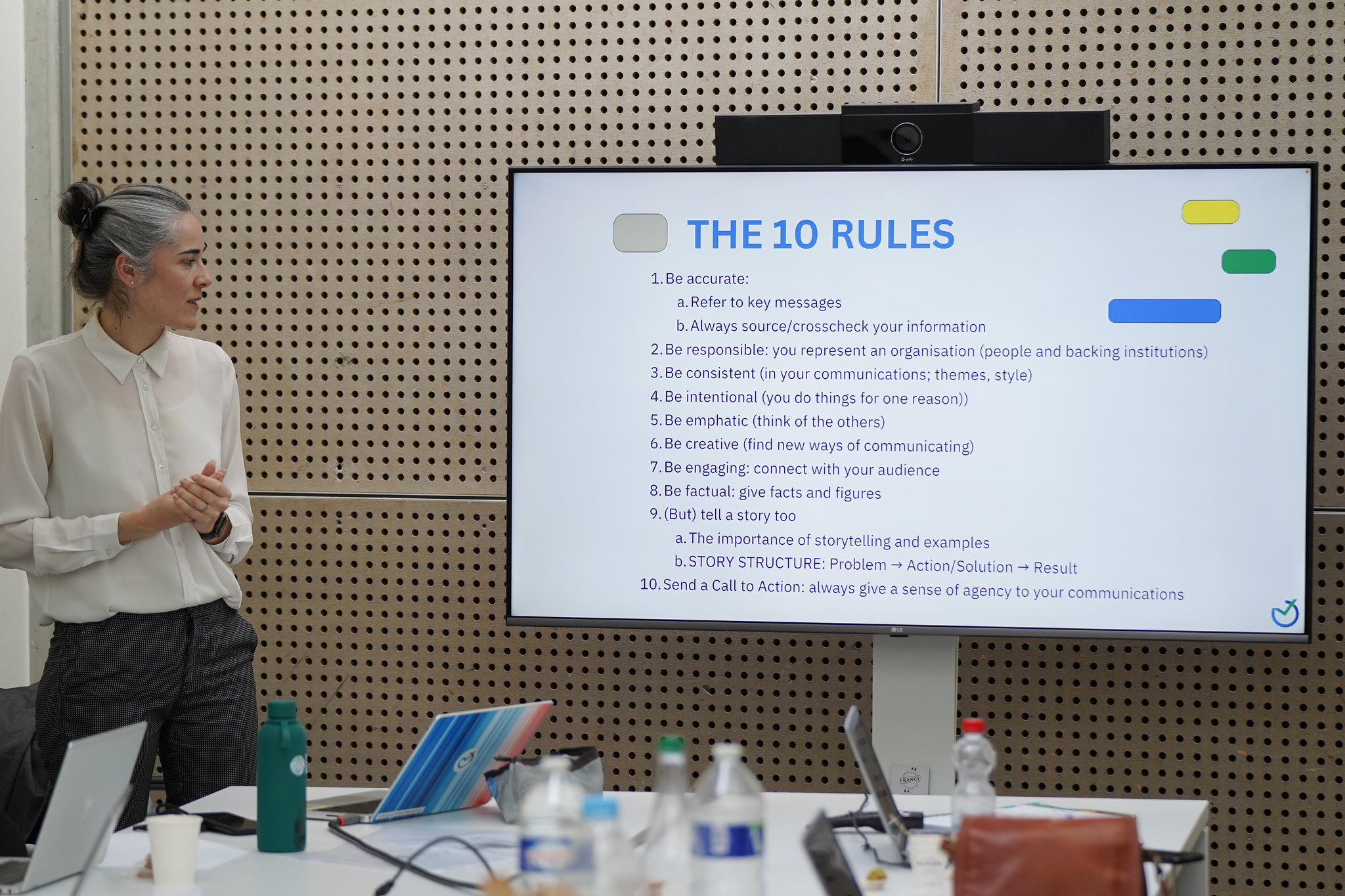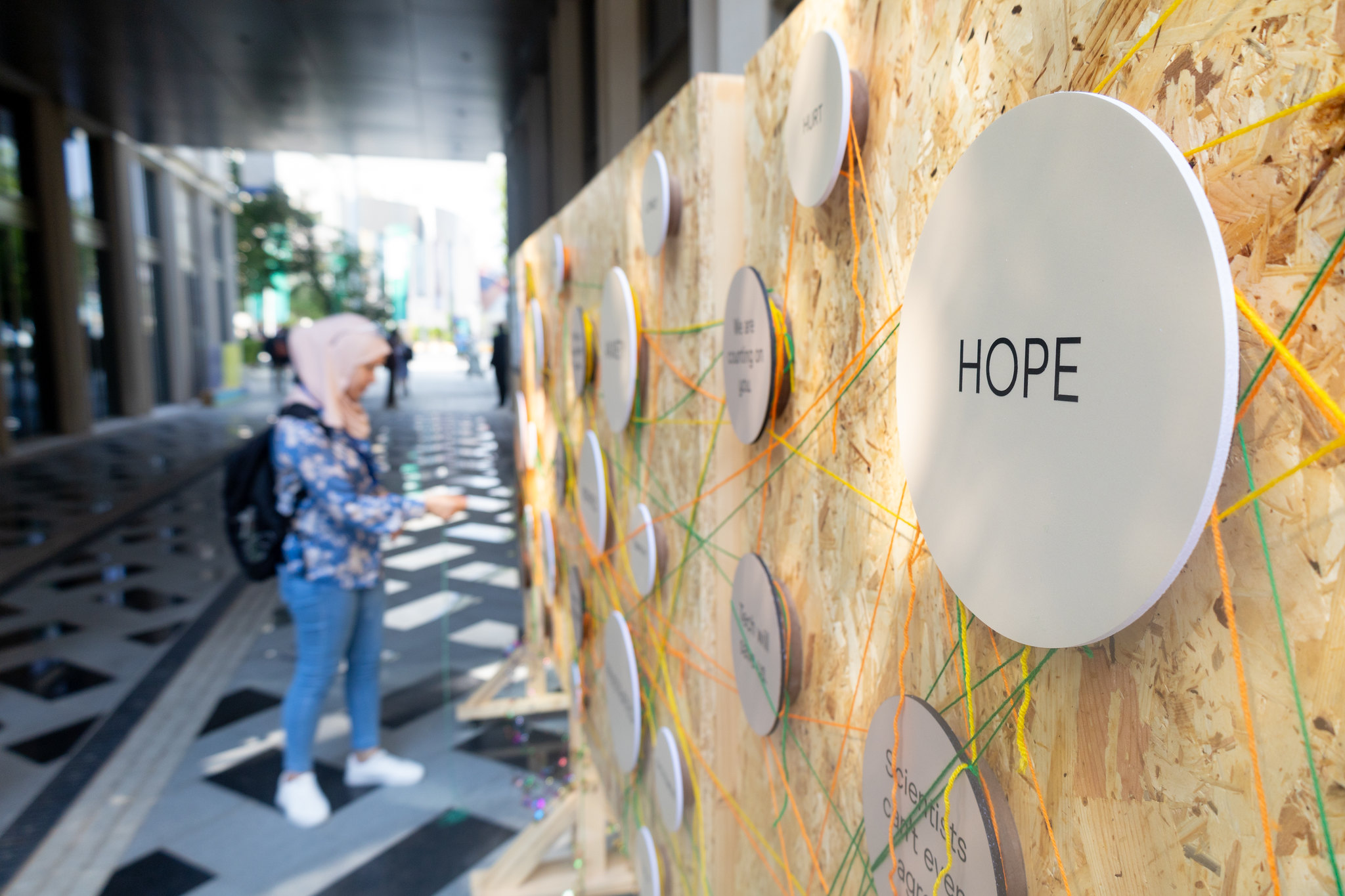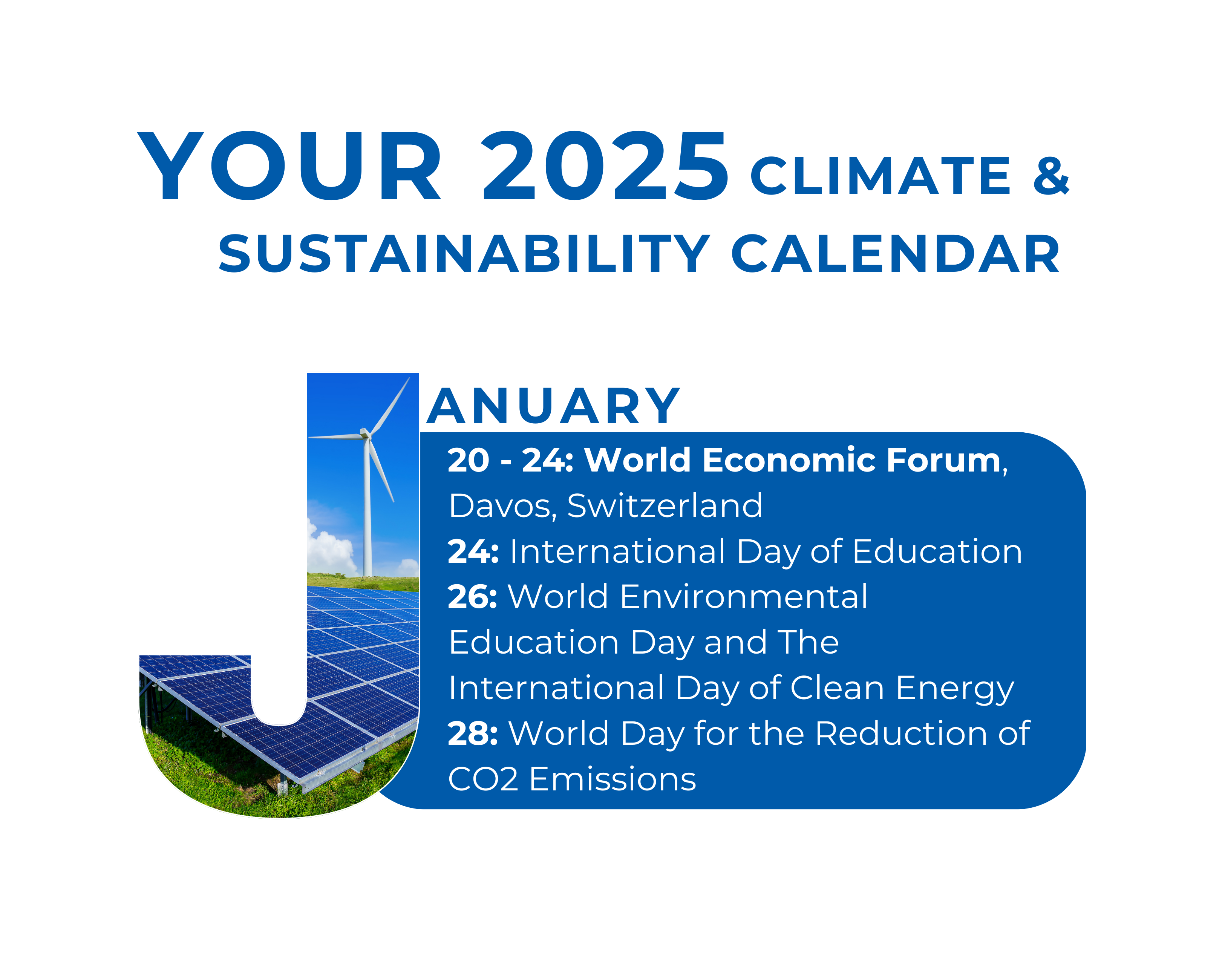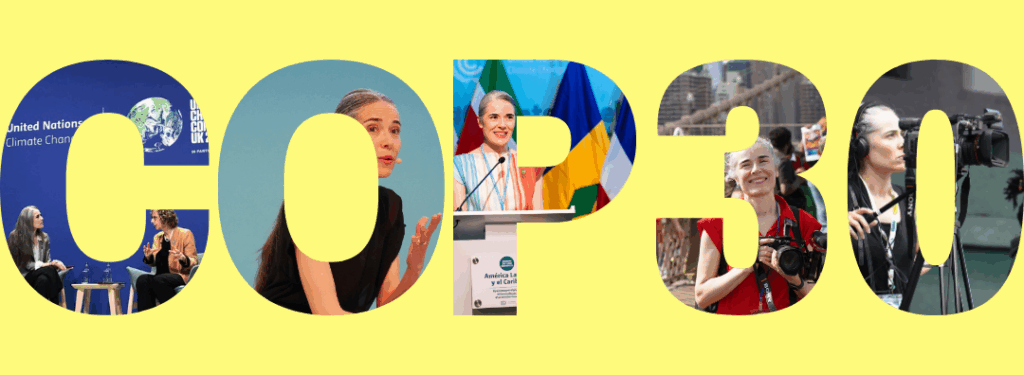Disinformation about climate change (and misinformation) is a growing problem that hinders informed decision-making and the advancement of sustainable policies. With the proliferation of hoaxes and fake news, it is essential to develop strategies to identify and combat misinformation.
Throughout this article, we will explore how to protect ourselves from climate disinformation and promote truthful and evidence-based communication.
What is climate fake news and why is it being spread?
Climate hoaxes are false or distorted pieces of information that seek to generate confusion or minimise the urgency of the climate crisis. These falsehoods are spread for various reasons, including:
- Economic and political interests: Some industries and power groups seek to discredit scientific evidence to avoid environmental regulations.
- Lack of knowledge and cognitive biases: Misinformation spreads easily when it appeals to pre-existing beliefs.
- Strategies of media manipulation: Disinformation is often disguised as legitimate opinion or pseudoscientific studies.
The role of social media in the spread of climate disinformation
Social networks have boosted the spread of climate hoaxes due to their immediacy and their capacity to go viral. Algorithms prioritise emotional and eye-catching content, which favours the dissemination of fake news over more complex and nuanced information. Among the main factors contributing to this problem are:
- Short and catchy headlines: Hoaxes tend to be presented in simple formats, with shocking and eye-catching phrases that quickly grab attention.
- Reinforcement of previous beliefs: The personalisation of content on social networks reinforces information bubbles, making people only see information that confirms their opinions.
- Emotional narratives: Disinformation often appeals to fear, indignation or surprise, emotions that facilitate its rapid dissemination.
- Dissemination by authority figures: When a hoax is shared by influencers or opinion leaders, its credibility increases among their followers.
The psychology behind the myths about climate change
The impact of climate disinformation is closely linked to how our minds work. Some of the most relevant psychological factors include:
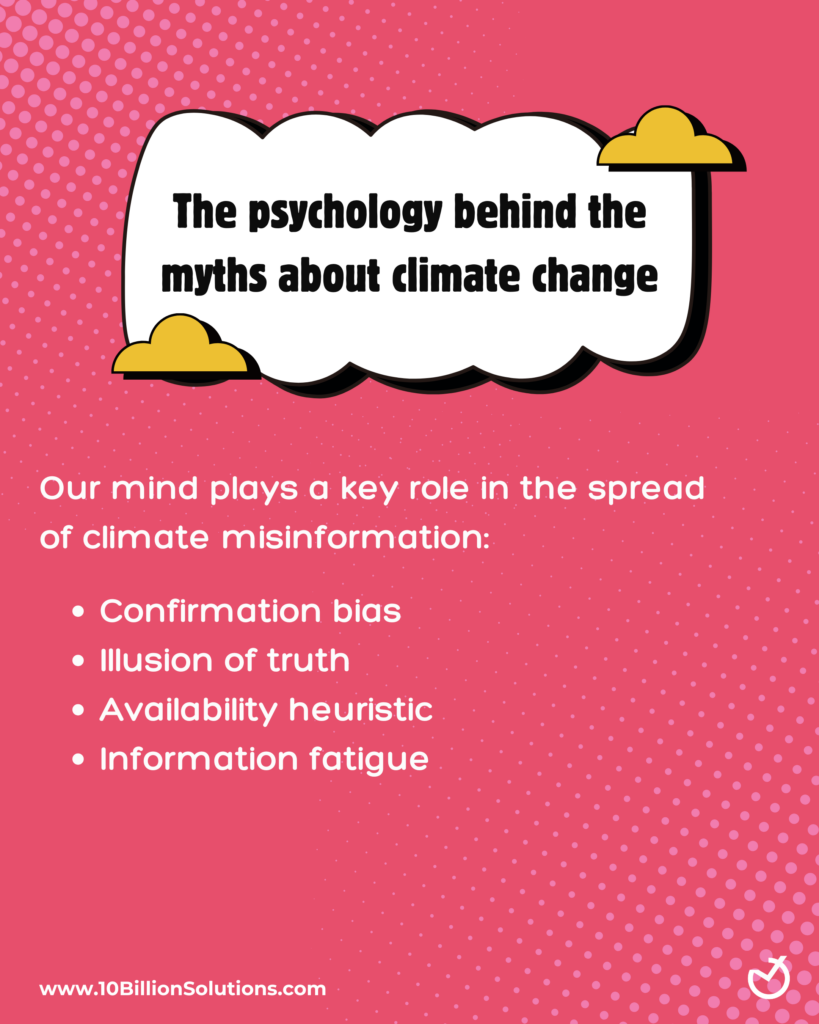
- Confirmation bias: People tend to seek out and accept information that reinforces their pre-existing beliefs, ignoring data that contradicts them.
- Illusion of truth effect: Repeating a lie makes it seem more credible, even when there is a lack of scientific evidence.
- Availability heuristic: People judge the likelihood of an event based on easily remembered examples. If the media highlights news that minimises climate change, this influences public perception.For example, if the media highlights cold days in winter but ignores extreme heat waves, some people may believe that climate change is not a serious problem.
- Information fatigue and eco-anxiety: Excess information can lead to saturation and, in some cases, lead to scepticism or inaction due to feeling overwhelmed.
Main types of climate disinformation
There are several strategies used to spread climate hoaxes:
- Absolute denial: Claims that reject the existence of climate change, despite overwhelming scientific evidence.
- Distortion of data: Figures are manipulated or studies are taken out of context to create a false impression of uncertainty.
- Conspiracy theories: They allege that climate change is an invention of elites to control the population.
- False equivalence: Scientific arguments and unsubstantiated opinions are given equal weight.
- Emotional strategies: Use of fear, mistrust and polarisation to generate confusion and division in the public debate.
How to identify and combat climate disinformation
To defend ourselves against climate misinformation, it is crucial to develop critical thinking and use reliable sources. Here are some key tips:
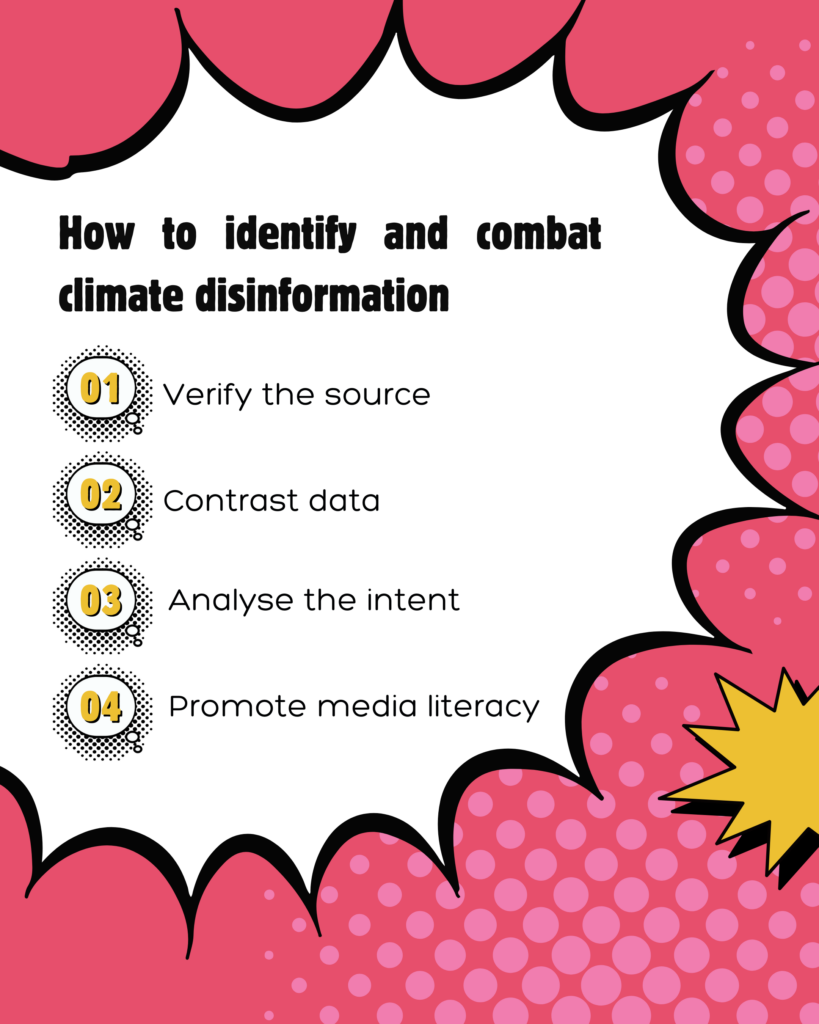
- Verify the source: Consult information in scientific media and official bodies such as the WMO and Copernicus.
- Contrast data: Don’t just take one headline at face value, but check different sources and verify their credibility.
- Analyse the intent: Ask yourself who benefits from the dissemination of certain information.
- Promote media literacy: Educate people about how hoaxes work and how to identify them.
- Refute with evidence: Share scientific studies and verifiable data to refute disinformation.
- Appeal to shared values: To persuade sceptics, it is more effective to connect with personal concerns, such as public health or the economy, rather than insisting solely on data.
Keys to effective communication in the face of climate disinformation
Communication is an essential tool in the fight against climate disinformation. In a world where fake news spreads quickly, it is key to offer clear, accessible and evidence-based messages. However, this does not simply involve conveying scientific data, but doing so in a way that the general public can understand and assimilate.
For climate communication to be effective, it is essential to:
- Translate science into everyday language: Not all audiences have a scientific background, so it is necessary to explain technical concepts with familiar and understandable examples.
- Use persuasive narratives: Beyond the data, it is important to tell stories that connect with the audience’s emotions and values.
- Avoid polarisation: Present climate change as a topic of common interest and not as an ideological debate.
- Use attractive formats: Infographics, short videos and interactive content can help capture attention in a saturated digital environment.
- Reinforce critical thinking: Instead of just debunking hoaxes, encourage the audience to question information and analyse its veracity.
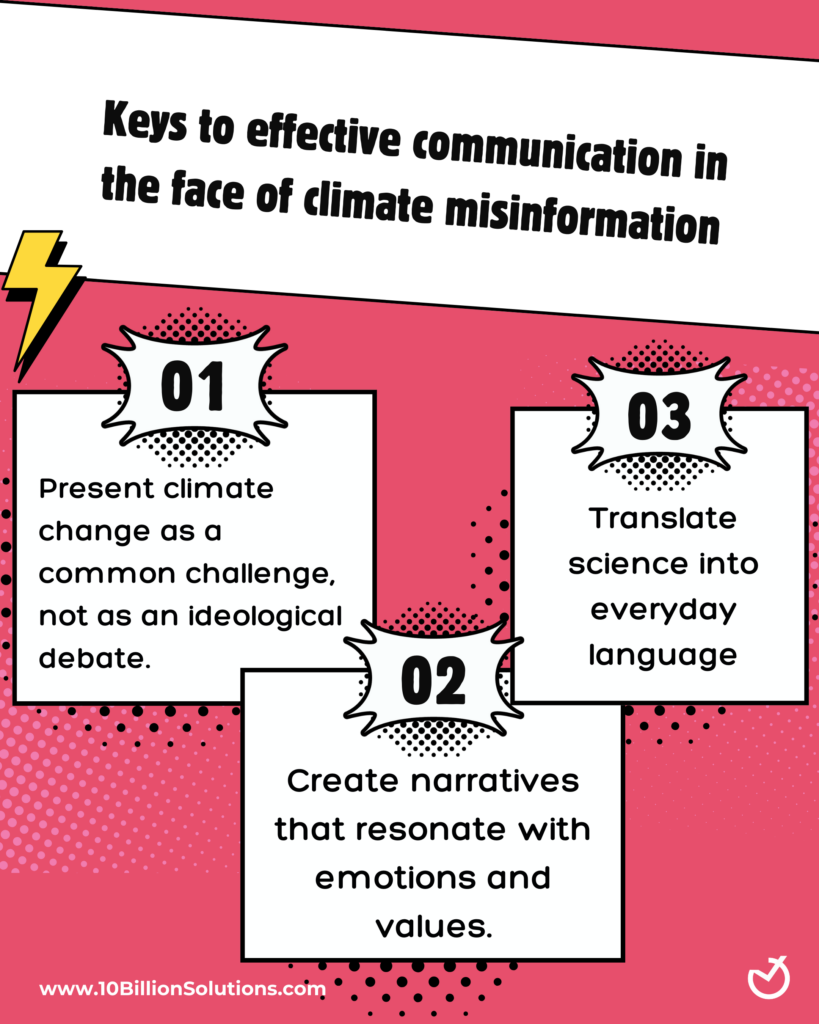
Climate misinformation is a challenge that requires a collective effort to combat. As citizens, we must be critical of the information we consume and share. As communicators and educators, we have a responsibility to disseminate verified data and encourage critical thinking.
Knowledge of the psychological processes that facilitate the spread of hoaxes allows us to design more effective strategies to counter them. Combating disinformation is not only an act of individual responsibility, but a joint effort involving education, science and communication.
This article is based on the talk given by Emilio Macía Rodríguez (Social Educator, UNED Lugo) and Iván Vázquez Lestegás (Sociologist, UNED Lugo), at the UNED Lugo (Universidad Nacional de Educación a Distancia, a Spanish university), where they analyse strategies to identify and debunk climate hoaxes (in Galician and Spanish, with the possibility of subtitles in other languages).
For more information, you can watch the talk given at the link. In our communication resources section you can also find articles and information to communicate effectively about sustainability and climate change.


